As a wise man once said, “you can program rest into your training or it will be given to you.”
One of the most commonly neglected aspects of a good training program is recovery. So much emphasis and literature focuses to training methodology: exercise modalities, periodizing, intensity/volume. There are many factors that go into proper recovery, and taking advantage of these will lead to better physical health, increased adaptations in the body, and decreased chance for training related injuries.
Sleep
The best training plan in the world doesn’t matter if we aren’t including ample sleep. Studies have shown that the average American is in a state of chronic sleep deprivation (Fullagar et al., 2015). This is the result of many contributing factors; however poor sleep habits will have detrimental effects on recovery from training. It is recommended to have on average 8-9 hours of sleep, more importantly deep sleep, to ensure proper recovery.
During the deeper stages of sleep is when the body releases essential hormones (growth hormone (GH), insulin like growth factor, testosterone) that are required for proper tissue healing and adaptation (Baechle & Earle, 2008). If these stages of sleep are not accessed the body will be unable to adequately repair damaged tissue and will end in poor tissue adaptation.
Nutrition
Diet and supplementation are an essential aspect to any training program. Ensuring that enough calories are consumed, that the macronutrients are in correct balance and that the body is properly hydrated is essential for success. These nutrition plans can vary greatly depending on what the desired outcome of the individual is.
Nutrition surrounding training is an important part of the food plan that needs to be properly evaluated. Making sure the body is nourished allows for a high-quality workout (Jeukendrup, 2013). Following exercise, the body is in a state called the “anabolic window”. During this phase, hormones for adaptation are circulating in large amounts creating an ideal environment for tissue adaptation. The length of this window is debated but the majority of the literature has it lasting from 30-60 minutes post exercise (Phillips & Van Loon, 2011). Providing the body with the essential nutrients during this phase will lead to greater adaptation and recovery. Protein, usually in the form of whey, is commonly consumed during this window. Studies show that 20-30g of protein allows for the greatest physiological response with some emphasis placed on the branched chain amino acids (leucine, isoleucine and valine) (Jeukendrup, Asker E., Gleeson, 2010; Tang, Moore, Kujbida, Tarnopolsky, & Phillips, 2009). It is also important to consume carbohydrates during this phase to replete depleted glycogen stores and ensure the body has access to quick energy to facilitate the tissue repair and remodeling process (Witten, Fink, & Maresh, 2016).
Rest
A common misstep for many novice to intermediate exercisers is overtraining. Engaging in too much physical activity too many days a week/month leads to eventual tissue breakdown, insufficient recovery/adaptation and eventually burnout or injury (Bishop, Jones, & Woods, 2008). It is important to have a rest day or two per week depending on your fitness levels to allow for proper recovery. These days can still have activity however it should be low in effort and not with the goal of exertion (Maria et al., 2012).
With individuals engaged in annual training programs it can also be beneficial to take longer periods of rest at various times throughout the year. These extended rests, often 3-5 days or longer, are also extremely beneficial in allowing the body to completely recover and engage in tissue adaptation(Maria et al., 2012).
References:
Baechle, T., & Earle, R. (2008). Essentials of Strength and Training and Conditioning (3rd ed.). Champaign, Il: Human Kinetics.
Bishop, P., Jones, E., & Woods, K. (2008). Recovery from Training: A Brief Review. Journal of Strength and Conditioning Research, 22(3), 1015–1024.
Fullagar, H. H. K., Skorski, S., Duffield, R., Hammes, D., Coutts, A. J., & Meyer, T. (2015). Sleep and Athletic Performance: The Effects of Sleep Loss on Exercise Performance, and Physiological and Cognitive Responses to Exercise. Sports Medicine, 45(2), 161–186. https://doi.org/10.1007/s40279-014-0260-0
Jeukendrup, Asker E., Gleeson, M. (2010). Sport Nutrition (2nd ed.). Champaign, Il: Human Kinetics.
Jeukendrup, A. E. (2013). The New Carbohydrate Intake Recommendations, 75, 63–71.
Maria, L., Sampaio, M., Serra, J., Luiza, M., Miranda, D. J., & Ferreira, M. R. (2012). Analysis of Knowledge Production about Overtraining. Journal of Exercise Physiology, 15(2), 20–30.
Phillips, S. M., & Van Loon, L. J. C. (2011). Dietary protein for athletes: From requirements to optimum adaptation. Journal of Sports Sciences, 29(sup1), S29–S38. https://doi.org/10.1080/02640414.2011.619204
Tang, J. E., Moore, D. R., Kujbida, G. W., Tarnopolsky, M. a, & Phillips, S. M. (2009). Ingestion of whey hydrolysate, casein, or soy protein isolate: effects on mixed muscle protein synthesis at rest and following resistance exercise in young men. Journal of Applied Physiology (Bethesda, Md. : 1985), 107(3), 987–92. https://doi.org/10.1152/japplphysiol.00076.2009
Witten, M. L., Fink, W. J., & Maresh, C. (2016). The role of dietary carbohydrates in muscle glycogen resynthesis after strenuous running. The American Journal of Clinical Nutrition, 34(October 1981), 1831–1836.


0 Comments